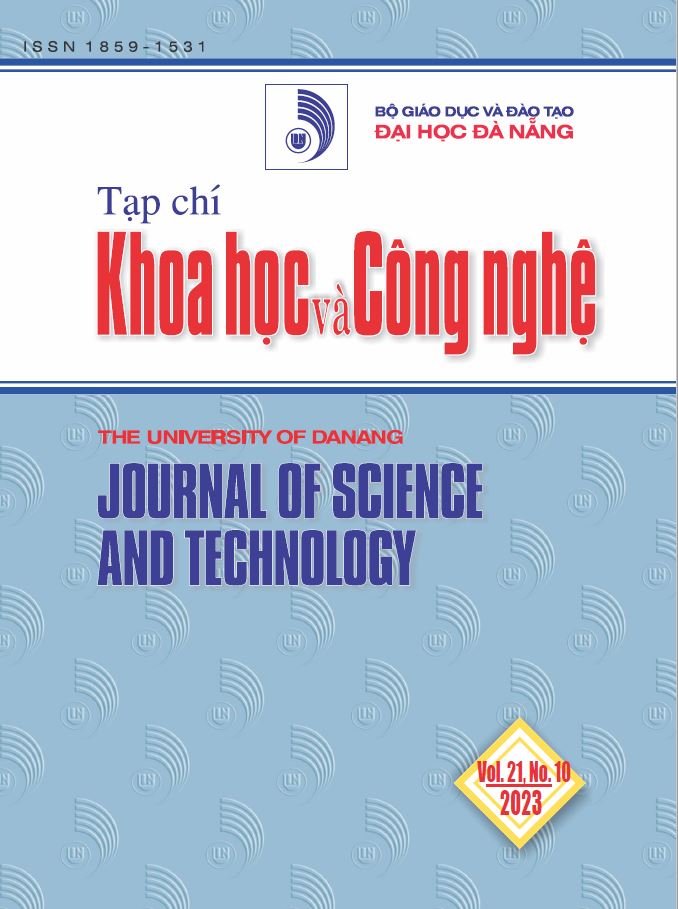Nghiên cứu phát triển cánh tay giả điều khiển bằng tín hiệu sóng não với cảm biến mindwave neurosky
 Tóm tắt: 621
Tóm tắt: 621
 |
|  PDF: 459
PDF: 459 
##plugins.themes.academic_pro.article.main##
Author
-
Phạm Anh ĐứcTrường Đại học Bách khoa - Đại học Đà Nẵng, Đà Nẵng, Việt NamVõ Như ThànhTrường Đại học Bách khoa - Đại học Đà Nẵng, Đà Nẵng, Việt Nam
Từ khóa:
Tóm tắt
Bài báo này trình bày về quá trình phát triển cánh tay giả điều khiển bằng sóng não người. Mô hình cánh tay giả chế tạo và lắp ráp dựa theo cơ cấu và tỉ lệ trung bình của cánh tay người trưởng thành. Cử động cánh tay được truyền động bằng các động cơ Servo. Các tín hiệu sóng não (các trạng thái Attention và Meditation) nhận được từ cảm biến Mindwave Neurosky 2 được xử lý để điều khiển cánh tay giả này. Quá trình thử nghiệm cho thấy khả năng dùng sóng não để thực hiện một số động tác cơ bản của cánh tay giả như gập mở khuỷu tay, xoay cổ tay với tỉ lệ thành công lên đến 90%. Tuy nhiên, tính năng hoạt động của cánh tay giả bị hạn chế do cảm biến này chỉ có 4 kênh và đo được 2 loại sóng. Để cải thiện và mở rộng tính năng hoạt động của cánh tay giả, loại cảm biến sóng não có chất lượng tốt hơn cần được thay sử dụng để có thể đọc tín hiệu chính xác và thu thập được nhiều loại sóng não hơn.
Tài liệu tham khảo
-
[1] LeBlanc, “Give Hope - Give a Hand”, [Online]. Availabe: http://web.stanford.edu/class/engr110/2011/LeBlanc-03a.pdf, 11/09/2008. Accessed 08/08/2023.
[2] General Statistics Office of Vietnam. National Disability Survey 2016, Hanoi, Vietnam, 2016.
[3] H. Trung, N.T. Duc, N.D. Ngoc, and L.H. Nam, “Design and Control of an Active Prosthetic Leg”. The University of Danang - Journal of Science and Technology, Vol. 12, No.121, pp. 24-29, 2017.
[4] Q. Nam, D.N.T. Nam, N.V. Tay, and P. V. Tuan, “Multifunctional limb disabled-aided system”. The University of Danang - Journal of Science and Technology, Vol. 1, No. 74.2, pp.. 42-46, 2014.
[5] T. Bui, L.V. Nguyen, T.N. Ngo, T.S.V. Nguyen, T.A.N. Ho, and Q.T. Phan “Improved Electric Wheelchair Controlled by Head Motion”, In Research in Intelligent and Computing in Engineering. Advances in Intelligent Systems and Computing, Vol. 1254, pp. 121-129, 2021. https://doi.org/10.1007/978-981-15-7527-3_12
[6] M. Qassim, and W.Z.W. Hasan, “A Review on Upper Limb Rehabilitation Robots”. Applied Science., Vol. 10, No. 19, p. 6976, 2020. https://doi.org/10.3390/app10196976
[7] M. Duc, T.X. Tuy, P and.D. Phuoc, “Study on the Lower Extremity Rehabilitation Device RHleg”, International Journal of Online and Biomedical Engineering (iJOE), Vol. 17, No. 11, pp. 141-156, 2021. https://doi.org/10.3991/ijoe.v17i11.25435
[8] N. Thanh, D. P. Vinh, N. T. Nghi, L. H. Nam, and D. L. H. Toan, "Restaurant Serving Robot with Double Line Sensors Following Approach”, IEEE International Conference on Mechatronics and Automation (ICMA), China, 2019, pp. 235-239. https://doi.org/10.1109/ICMA.2019.8816404
[9] H. Nam, D.P. Vinh, P.A. Duc, and V.N. Thanh, "System identifications of a 2DOF pendulum controlled by QUBE-servo and its unwanted oscillation factors", Archive of Mechanical Engineering, Vol. 67, No. 4, pp. 435-450, 2020. https://doi.org/10.24425/ame.2019.129679
[10] D. Pham, and H.J. Ahn, “Evaluation of input shaping methods for the nonlinear vibration system using a Furuta pendulum”, Journal of the Korean Society for Precision Engineering, Vol. 37, No. 11, pp.827-833, 2020. https://doi.org/10.7736/JKSPE.020.056
[11] T. Vo, and H. Sawada, “Simplified cerebellum-like spiking neural network as short-range timing function for the talking robot”, Connection Science, Vol. 30, No 4, pp. 388-408, 2018. https://doi.org/10.1080/09540091.2018.1510901
[12] T. Nguyen, C.M. Quang, D.T. Can, and P.A. Duc, “Characterization of geometrical parameters of plastic bottle shredder blade utilizing a two-step optimization method”, Archive of Mechanical Engineering, Vol. 68, No. 3, pp. 253-269, 2021. https://doi.org/10.24425/ame.2021.138392
[13] H.T. Tran, D.S. Nguyen, N.T. Vo, and H.N. Le, "Design of delta robot arm based on topology optimization and generative design method", 5th International Conference on Green Technology and Sustainable Development, 2020, pp. 157-161. https://doi.org/10.1109/GTSD50082.2020.9303083
[14] N. Tien, and V.N. Thanh, “Method For Controlling Multi Command Type Servo Motors Using Matlab”. The University of Danang - Journal of Science and Technology, Vol. 6, no.91, pp. 64-67, 2015.
[15] N. Nguyen, H.T. Ngo, H.L. Le, and H.N. Le, “Development of a Receptionist Robot: Mechanical and Control System Design”. The University of Danang - Journal of Science and Technology, Vol. 17, No. 6, pp. 31-34, 2019.
[16] Q. Khai, “Survey, Design and Fabrication of Humanoid Robot Hand Model Using Leap Motion Sensor”. The University of Danang - Journal of Science and Technology, Vol. 19, No.1, pp. 14-18, 2021.
[17] T. Phuc, Industrial Robot, Science and Technology Publishing House, 2006.
[18] Department of Science and Technology – Center for Science and Technology Information and Statistics. "3D printing technology - Future application direction", https://dost.hochiminhcity.gov.vn/, 2018 [Online]. Availabe: https://dost.hochiminhcity.gov.vn/documents/741/Tongquan__Ky_5_Cong_nghe_in_3D.pdf. Accessed 08/08/2023. [Accessed 10/8/2023]
[19] K. Nguyen, D.K. Chau, and A.D. Pham, “Characterization of an FDM-3D Printed Moldcore in a Thermoforming Process Using Taguchi in Conjunction with Lumped-Capacitance Method”, Arabian Journal for Science and Engineering, Vol. 48, pp. 11989-12000, 2023. https://doi.org/10.1007/s13369-023-07646-7
[20] Neurosky, MindWave Mobile 2 Quick Start Guide and User Guide, 08/06/2018 [Online]. Availabe: http://support.neurosky.com/kb/mindwave-mobile-2, [Online]. [Accessed 08/08/2023]



